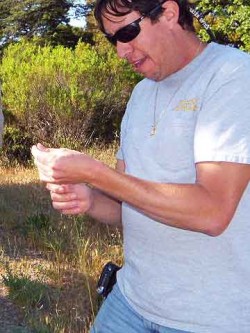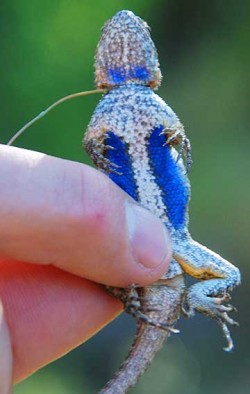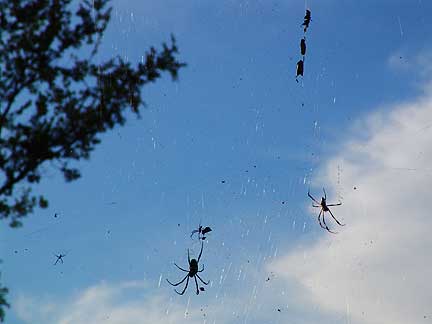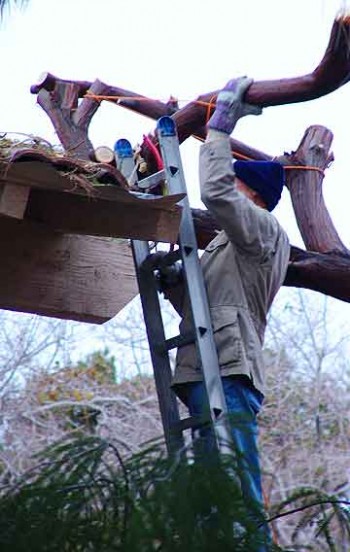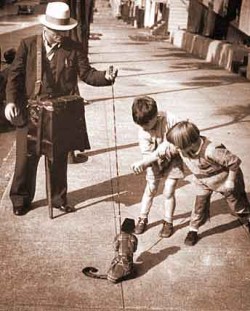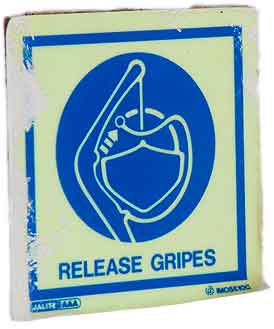 I’ve been listening to essays by George Orwell. Terry, a voracious reader, devoured Orwell after Proust and Vidal, and he’s now working on Paul Bowles. I downloaded some Orwell essays here, but I find that when I’m in front of my computer (which is a lot), I’m either working or making use of the internet, rather than reading material safely stowed on my hard drive. I can read those documents any time. Somehow, though, I don’t.
I’ve been listening to essays by George Orwell. Terry, a voracious reader, devoured Orwell after Proust and Vidal, and he’s now working on Paul Bowles. I downloaded some Orwell essays here, but I find that when I’m in front of my computer (which is a lot), I’m either working or making use of the internet, rather than reading material safely stowed on my hard drive. I can read those documents any time. Somehow, though, I don’t.
Then I ran across this hint, which makes it a cinch to convert text to an iTunes audiobook. The hint contains a downloadable script that practically installs itself, then shows up under the Mac’s Services menu. (Although this hint is for Leopard only, it can be tweaked for Tiger.) I’m sure my programmer friends are privately chiding me, but I’m glad that someone wrote and provided a script to make the text-to-audiobook conversion dead simple.
With the stories on my iPod, they’re sure to be listened to, and planes are the ideal place. I can only read so many hours in the dry air of airports and airplanes, before my contacts start sticking to my eyeballs. Right after converting a few files, I flew to Ireland.
At first, the pleasure of listening was only about half the pleasure of reading. I expected that for two reasons. First is that I prefer to read good writing, linger over it, reread lovely phrases. But okay, there’s deep-seated pleasure in being read to, too. I’ve listened to a few audio books lately, all read by their authors, and I enjoyed them, though more for their stories than their writing.
Listening to synthesized speech is not the same as being read to by an author. The lauded new Leopard voice Alex is synthesized and, though his diction is not bad, Alex lacks style, grace, sensitivity, timing, mellifluence, drama, and every other quality that makes George Guidall, my sister’s uncle-in-law, an award-winning reader of audiobooks (more than 800 books to his credit). But…
I got used to Alex’s style. And though it’s not like reading, nor the same as being read to, it’s better than osmosis. It’s better than not knowing the texts at all. It’s like the Cliff Notes version, but delivered slowly, a fleeting association to reunite with later. Maybe.
And now, after listening to a few more essays, I’m happy enough with Alex. I found that slowing his speech by about 15% improves the experience. I’ve converted a 13,000-word article on cybercrime to digest on my next flight.
…
Later: The cybercrime article was good, but I didn’t listen to it on a plane. I listened during a 2+ hour taxi ride from the south of England to London. It was too bumpy to read, too much strobe effect from the shade of trees on a rare sunny day. The cybercrime article, from Wired, was an hour and 22 minutes long. Perfect for the drive.
And: My computer suddenly lost all input and output audio devices. After a little troubleshooting, I removed the SpeakToItunesAudiobook.service from my system and all’s well again. If that was not an anomaly, I will just drop the service in when I need it.
Lastly: In his essay “How the Poor Die,” I was delighted to hear Orwell mention Axel Munthe’s The Story of San Michele. Axel Munthe was a great-grand-uncle of Bob’s, and The Story of San Michele is a great grand-read.

